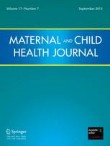
Abstract
Background
Twenty per cent of Australian children enter primary school with at least one area of developmental vulnerability (Commonwealth of Australia. (2018). Australian early development census [AEDC]. Retrieved from https://www.aedc.gov.au/.). This statistic is in the context of Maternal and Child Health (MCH) services offering regular developmental screening up to 8 times between 2 weeks and 3.5 years of age.
Objectives
This study investigated: (1) enablers and barriers influencing MCH nurses in identifying children from birth to school age at risk of developmental delay. This focused on their experience, knowledge, attitudes and skills regarding the use of developmental screening tools. And (2) strategies to support MCH nurses and parents to identify children at risk of delay.
Method
This mixed-methods study combined an online questionnaire and three focus groups and participants were MCH Nurses (N = 19) from one Australian municipality.
Results
MCH nurses surveyed (N = 19) reported more confidence in screening older children compared to children younger than 12 months. 15 of 19 nurses did not have accurate knowledge and skill in using PEDS and Brigance screens. In the focus group interviews (N = 16), time restraints, language used in developmental screening tools, and excessive waiting time for referral were raised as key barriers to identifying children at risk.
Limitations
While the study provides rich insight, caution needs to be exercised when making generalisations from the findings given the small number of participants from one municipality.
Conclusion
Recommendations for practice, service management, and further research are provided to improve the process of early detection.



No comments:
Post a Comment